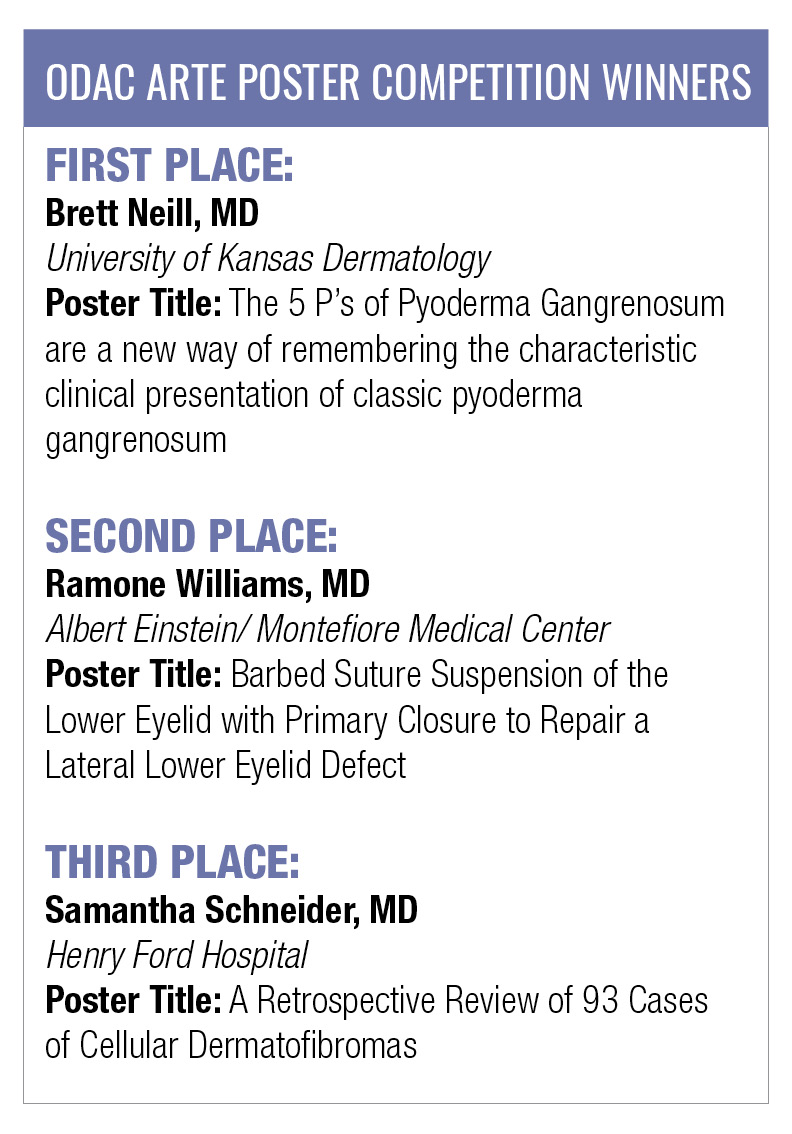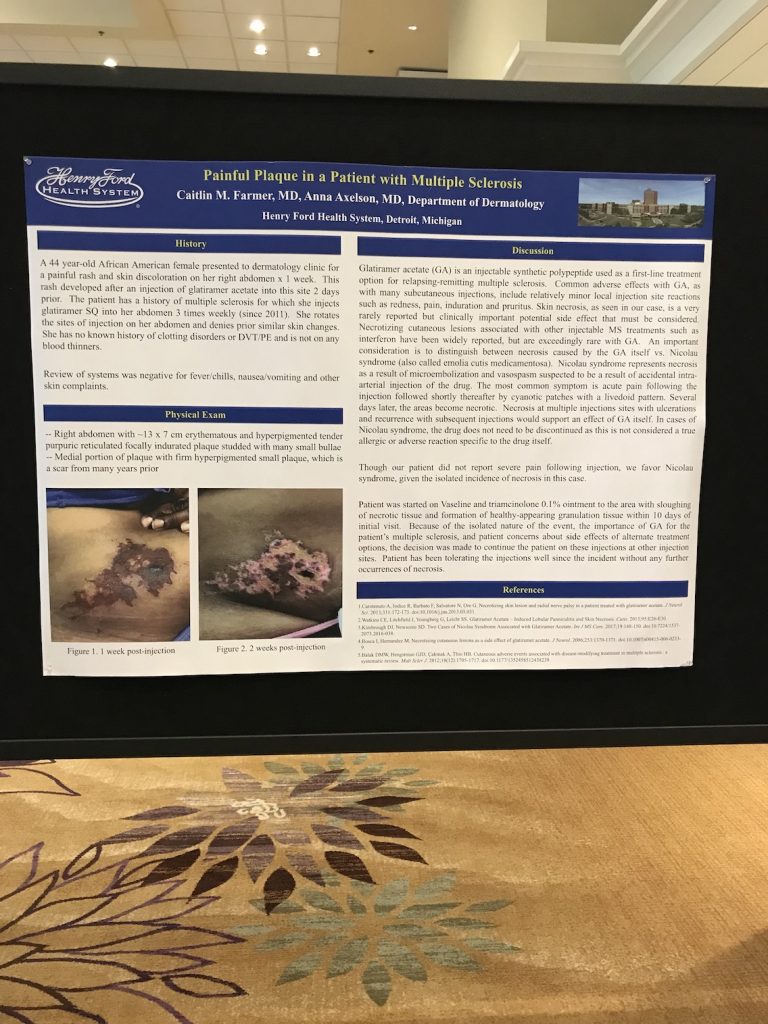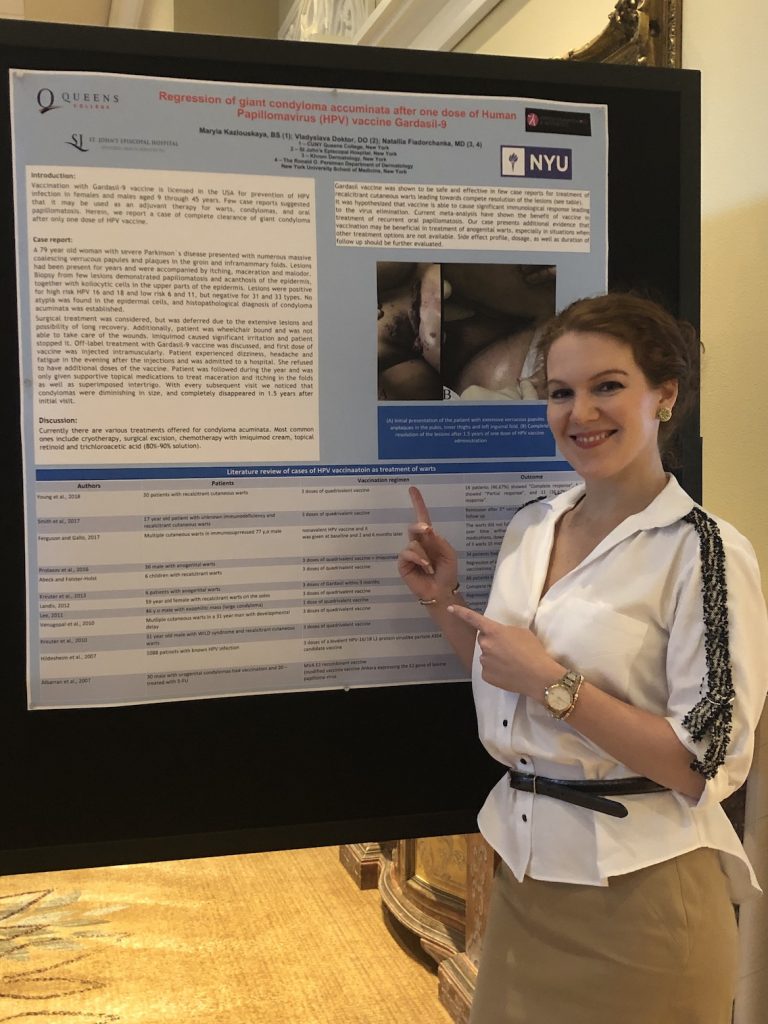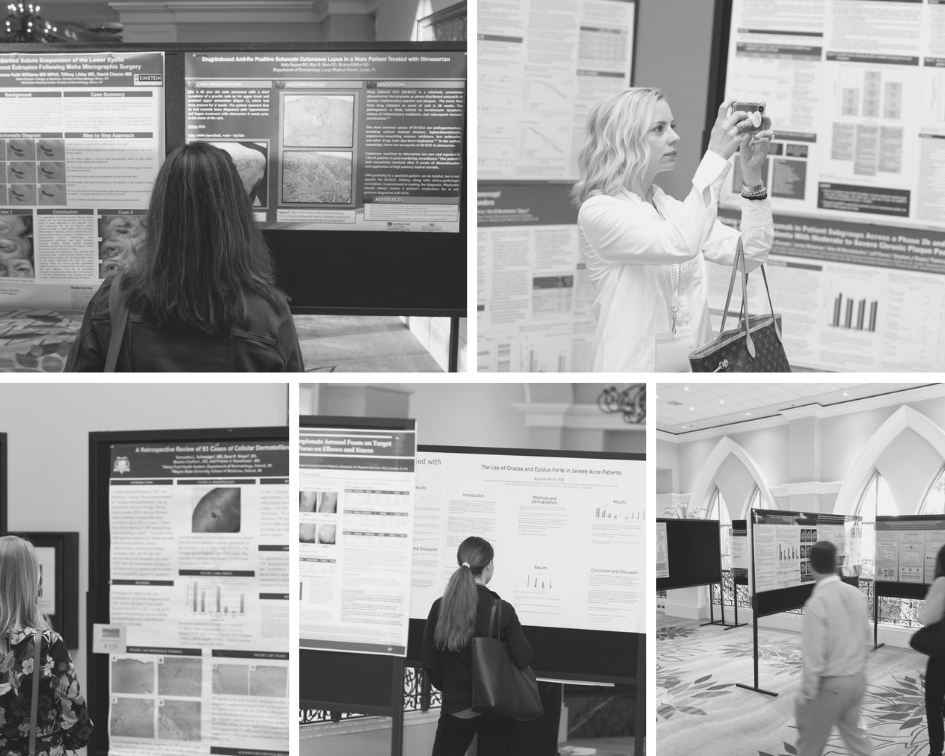Some the best and brightest burgeoning dermatology residents from across the country participated in the Advanced Resident Training and Education (ARTE) scholarship program hosted at the 16th Annual ODAC Aesthetic, Surgical and Clinical Dermatology Conference.
ARTE scholars presented a total of 20 posters discussing medical, surgical, and cosmetic dermatology topics, including interesting case reports with teachable points and clinical pearls, all of which were judged by ODAC faculty as part of the 9th ARTE Poster Competition. First, second, and third place winners were as follows:

We caught up with a couple of the ARTE scholars to discuss the fascinating cases they had presented. Below are the highlights of our interviews.
Caitlin Farmer, MD, Henry Ford Hospital
Poster Title: Painful Plaque in a Patient with Multiple Sclerosis
Dr. Farmer and her colleagues presented a 44-year-old patient with a long history of multiple sclerosis (MS) who had been injecting glatiramer acetate subcutaneously into her abdominal skin three times weekly for 7 years for treatment of her MS. She presented to dermatology with a large, painful black necrotic plaque on her abdominal skin following one of her injections. She had no history of prior injection site reactions. These types of necrotic skin reactions have been reported previously with interferon in multiple sclerosis patients but had never been reported with glatiramer acetate.
The team ultimately concluded that this necrotic skin reaction following the injection of glatiramer acetate was most consistent with Nicolau syndrome. Nicoloau syndrome is a rare necrotic livedoid skin reaction that occurs typically following intramuscular and intra-articular injections. It is thought to be caused by either prolonged vasospasm of superficial vessels at the injection site or the development of microthrombi at the site, both of which lead to a livedoid vasculopathy following by skin necrosis.
The important pearl in this case is that unlike other potential causes of necrotic skin reactions due to injectable medications, Nicolau syndrome tends to be an isolated and idiosyncratic event, and patients can continue their therapy once the reaction has subsided.
In this case, the patient skin was managed by the team, and she was allowed to continue the glatiramer acetate injections. She was asked to rotate sites in her abdomen. The patient is still using the medication, and it continues to help her MS.
Vladyslava Doktor, MD, St John’s Episcopal Hospital, New York
Poster Title: Regression of Giant Condyloma Accuminata After One Dose of Human Papillomavirus (HPV) Vaccine Gardasil-9

This case was of a 79-year-old wheelchair bound woman with severe Parkinson’s disease who presented with multiple giant condylomata. Lesions were biopsied, and the team asked their collaborating dermatopathologists to check for HPV types covered by the Gardasil-9 vaccine. The patient’s lesions tested positive for high risk HPV types 16 and 18 as well as low risk types 6 and 11. Surgical treatment was deferred due to patient’s health status. Topical imiquimod was discontinued due to significant irritation. It was decided that the team would try the off-label use of the Gardasil-9 vaccine in this patient.
The patient received one intramuscular dose of the Gardasil-9 vaccine. She experienced dizziness, headache, and fatigue and was later admitted to the hospital for these symptoms. As such, she refused further doses of the vaccine. Despite only receiving one dose of the vaccine, all lesions had cleared within 1.5 years of the vaccination.
One of the major teaching points from this case was that the patient’s lesions took a long time to clear following treatment with the vaccine. The patient had been followed for other medical issues, and the team noted that lesions were continuing to clear even a year after only one Gardasil-9 injection with full clearance of lesions at about 1.5 years. Of note, the Gardasil-9 vaccine was covered by the patient’s insurance and does typically require 3 doses of the vaccination.
If you are interested in applying for the Advanced Resident Training and Education (ARTE) scholarship program at the 2020 ODAC conference, click here.
Did you enjoy this post? Find more topics on Navigating Residency here.

